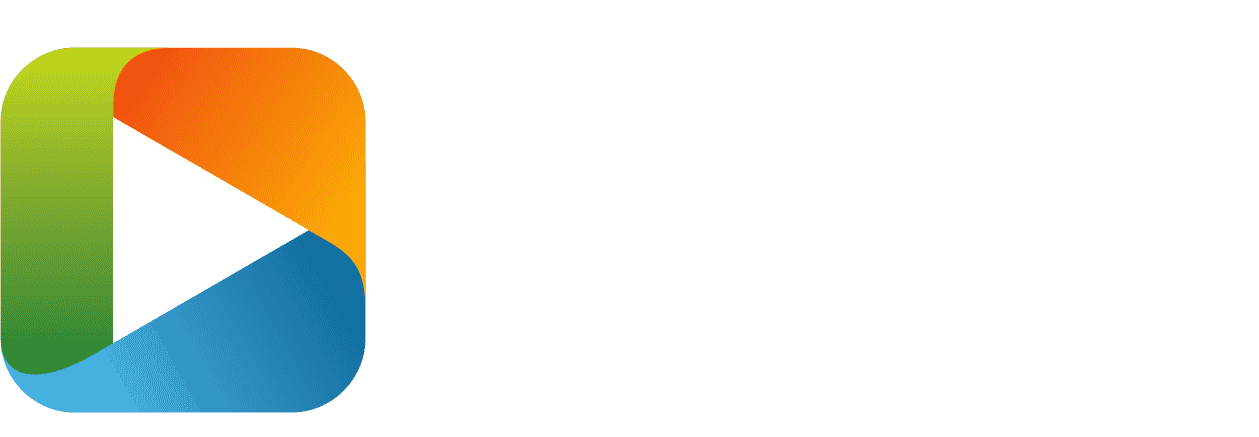The business world sees mergers and acquisitions everyday. That’s because it’s commonplace for companies to come together, whether through acquisition or strategic relationship, to improve market share, expand geographic reach, add to product portfolios, gain access to customers or even take a competitor off the board. While it doesn’t happen as often in the standards world, it can and for sometimes similar reasons. But in the grand scheme of things, standards organizations like SVTA and DASH-IF, often come together for more altruistic reasons—to reduce fragmentation in the industry.
Having absorbed two organizations now, OATC and DASH-IF, I thought it would be good to look at some of the “lessons learned” in bringing different groups together. Because it’s not as straightforward as it is in the business world. Organizations like DASH-IF grow up using specific systems and working in specific ways. Changing those suddenly can disrupt work-in-progress and undermine the ability to perform future work. But failing to integrate the organization effectively (and quickly) doesn’t solve the fragmentation problem which drove the organizations to come together in the first place.
Lesson Learned #1: Do Your Due Diligence
When we absorbed the OATC, it was very simple: they had ceased new document development and were looking for a place to house their work in-perpetuity. Integrating them into the SVTA structure was easy. We transferred their assets and provided a repository for their documents. DASH-IF, on the other hand, was a very different scenario. This was an active organization with multiple documents and active projects. To ensure that we could come together, we had to look at their governing documents and existing policies, operating systems, support platforms (like GitHub), as well as liabilities and existing contracts with external parties. Failing to do so, for example, could result in irreconcilable differences such as conflicting intellectual property rights. In cases like this, seeking legal counsel to review the documentation is crucial. They will most likely create a “data room” where all the main documents needing assessment will be kept.
Another important element of the due diligence is creating a timeline of deliverables from both organizations and assigning a responsible party for each. The list should include operational, financial, legal, and communications tasks, with a clear deadline and owner for each item.
Lesson Learned #2: Restrict Direct Board Involvement
This may sound draconian, but it’s not. As the old adage goes, “too many cooks in the kitchen can spoil the roast” (or something like that). In short, though, too many people involved with too many opinions only creates headaches and lengthens the time to get the deal done. Each organization should supply a subset of the board, a committee if operating procedures demand it, to meet and hash out the terms and how the merger will happen. For us, that involved DASH-IF coming up with a proposed transition plan for 2024 and 2025 which allowed our selected board members to look at the proposed terms against how we operate, and what was best for the SVTA at large. This eventually became the Agreement Terms which were an appendix of the formal acquisition agreement. The agreement itself is very straightforward and really just defines the closing date and what the acquired organization, in this case DASH-IF, needs to provide before that closing date (hence the data room in best practice #1). There is no need for anyone other than lawyers to hash through this. But the Agreement Terms, which define how the merging organization will operate under the umbrella of the other organization, have to be hashed out to ensure that the merger works for both organizations. If this involved a dozen people from each side, it would never get accomplished. So a smaller “tiger team” from each side can take care of 90-95% of the terms and then present them to their individual boards for final approval.
Lesson Learned #3: Reconcile the IPRs (Or Have A Plan To Support Multiple)
Every organization seems to tackle intellectual property rights differently. For some, it’s more restrictive to ensure that IP rights holders still retain those rights while allowing the use of their technology to the specifications implementers. Others have much more liberal, public, and open policies that are designed to ensure maximum reach. In our case, the DASH-IF and SVTA IPRs were not necessarily compatible. We couldn’t pull over all of their documents and simply say “these are now covered by the SVTA IPR”. To address the incompatibilities, we had to take a different reconciliation approach: all documents created, or in progress, before the close of the transaction would continue to be covered by the DASH-IF IPR Policy and anything created after the closing date was covered by SVTA. While this allowed us to ensure continuity, it also created a bit of complexity for implementers to figure out which IPR covered which document. To address that, the SVTA has modified document publishing processes (and website IPR references) to ensure transparency to the end-user as to which IPR covers which document.
Lesson Learned #4: Aim For A Generous Closing Window
When we began talking with DASH-IF about this transaction, there was one thing clear: it could not interrupt the on-going work that DASH-IF was doing. But there were also a significant number of systems to reconcile, data to move over, accounts to close, and services to terminate. For example, DASH-IF employed a different organization management company than SVTA. We needed to figure out a proper date to cut-off the use of DASH-IF’s existing back-end system so that data production would end and we could migrate the data over to SVTA (as historically archive). To accomplish this, and a number of other tasks while simultaneously enabling DASH-IF to operate “as-is” within the SVTA, we determined that a longer closing date made more sense. That way, DASH-IF, as a legal entity, would continue to exist so long as was needed to keep things operationally active while they were moved over.
And just like it is important to seek legal counsel for the review of the documentation, it is also vital to work with a professional association management company that has experience in merging organizations and can coordinate all of the operational elements.
Lesson Learned #5: Stick To A Financial Model And Use It To Influence Initial Discussions
With any merger, revenue has to play a critical part in the final decision. For us, we couldn’t bring the SVTA and DASH-IF together if the financial outlook didn’t work out. In short, if none of the DASH-IF members renewed their membership after the merger went through, the SVTA would end up shouldering all the annual DASH-IF liabilities (such as funding development work on dash.js) which would create an untenable financial situation. This was especially risky, as the SVTA Membership fees are higher than what DASH-IF members were used to paying. To address this, we created a low, medium, and high membership conversion model to find the sweet spot where a specific number of member conversions made the transaction viable. Of course, there is no way to predict actual conversions. But to facilitate engagement with the larger SVTA, and ensure that DASH-IF members who weren’t already SVTA members could experience as much as possible, we converted them automatically to a Principal membership level, which is our highest participation category. All they needed to do to participate in any project outside of DASH-IF (all members, regardless of whether they sign the new agreement, can participate in the DASH-IF initiatives to ensure continuity of work) was sign an SVTA membership agreement, and in turn abide by the SVTA policies for any SVTA initiatives that are beyond their DASH-IF involvement.
Lesson Learned #6: Get Membership Documents Reviewed As Early As Possible
Large companies require significant lead time to review documentation such as membership agreements, By-Laws, and IPR policies so it’s best to share these with the merging organization as soon as possible. This will allow the other organization to distribute them to their members with plenty of time for their own companies to review and approve in a timely manner. We provided our governing documents to DASH-IF very early on in the process allowing their member companies ample time to review and ensure there would be no insurmountable issues to working within the SVTA.
Lesson Learned #7: Account for Legal Costs in the Financial Model (And Cap Them)
Mergers and acquisitions can be complicated. As such, it is crucial to ensure that all the “i”s are dotted and the “t”s crossed, and as we mentioned above, attorneys need be involved. It helps, of course, to have counsel that is well versed in industry associations and SDO operations, but even then, legal bills can escalate very quickly. It’s important to separate what absolutely needs to be done by the legal team and what can be done by the organization staff. In our case, for example, DASH-IF had several agreements with outside contractors that needed to be renewed under SVTA. Rather than having counsel act as the go-between, we had them produce a sub-contractor agreement that aligned with our organization and then we worked directly with the sub-contractors to get them signed. This reduced the number of hours billed for legal services.
Lesson Learned #8: Be Flexible, Be Understanding, But Remember To See The Forest for the Trees
Of course, the merging organization is going to want to keep doing everything the way they were doing it. There may even be egos in play that can upset the entire process. It’s key to remain flexible and ensure that the merging organization members feel accepted and listened to. But the end goal, of course, is to reduce that fragmentation in the industry by bringing two organizations together. Organizations shouldn’t try to “acquire” or “absorb” other organizations out of “market share” and ego. That does no one any good and organizations often don’t have the capital to pursue that line of strategy anyway. So when we remain flexible, we remain committed to that end goal. In the case of the DASH-IF merger, we set up a Steering Committee (formed from the existing DASH-IF board members) to govern the DASH-IF initiatives. This ensured that the individuals who were in charge of DASH-IF still felt like they were involved in the decision-making related to the work they oversaw.
Lesson Learned #9: Organizations Are Driven By People and A Culture And Not Just Agreements, Terms, and Mission Statements
Setting the financials, the merger terms, and working out the IPR issues are all essential enablers of the final step—bringing the people together in a merged, collaborative, and ever increasingly aligned organization of projects, interests, and the people who move the work ahead. This is an ongoing goal that needs frequent conscious attention. DASH-IF has a number of work areas that align with and have similar scope as SVTA working groups. It would be easy enough to just add the list of DASH-IF working groups to the SVTA roster and declare victory. But that isn’t a blending of the two organizations, that’s simply hosting them under the same administrative umbrella. It was a consideration during the merger work, but now that the merger is done on paper, the ongoing work of bringing the people together and encouraging engagement and collaboration still lies ahead. Organic engagement is best, but consciously creating opportunities for it to happen is just good sense. The SVTA invited DASH-IF to join the Q3/Q4 2024 SVTA meeting in person after the merger to give a half day workshop deep-dive on DASH-IF work. Going forward, looking for opportunities, opening doors when needed, and keeping discussions going will be key to building a new blended culture. It’s likely two or more years before everyone is culturally blended and it will require active and deliberate watching and action to help it along.
Lesson Learned #10 (and final thought): Keep Asking The Important Question
When the organization’s leadership is deciding whether to move forward with a merger, it is easy to get lost in the logistics minutia. While details do matter, it’s not the details that set the goal and the mission for the transaction. This is why during the SVTA internal discussions, our Board of Directors would often come back to the main question: “What issue are we trying to solve with this merger”? Keeping the main goal front and center helped us stay focused and guide the process. Once again, seeing the forest for the trees.

Jason Thibeault
Jason is the CEO of the Streaming Video Technology Alliance, the international technical association for streaming video which brings companies from across the streaming ecosystem together to collaborate on technical solutions to delivering high-quality video at scale. In this role, he runs day-to-day operations, finances, member recruitment, strategy, and evangelizes the organization at events around the world. He is also the co-founder of a big data startup, datazoom.io. Jason is a contributing editor at Streaming Media Magazine and has written several books.





